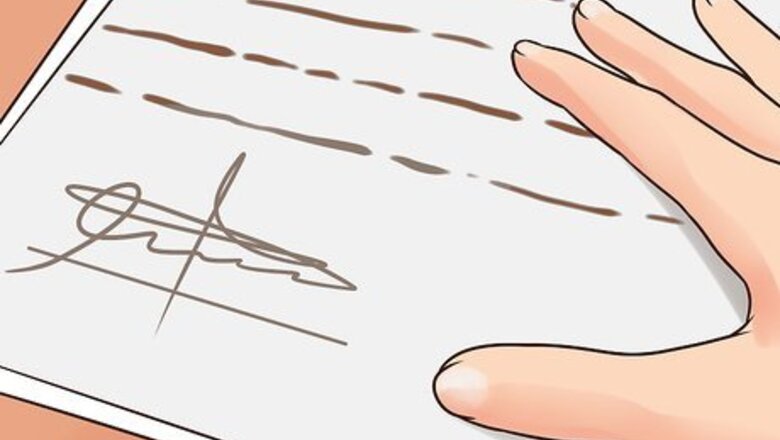
views
Using Tracing Paper
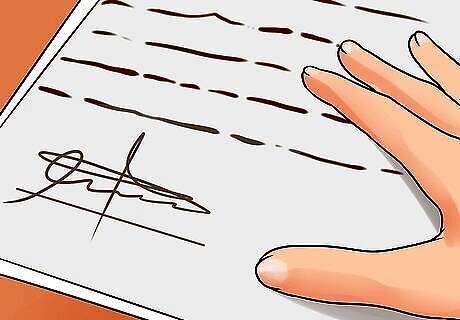
Place a piece of tracing paper over the original signature. Tracing paper is made to be translucent, so you can clearly see what's underneath it. If you don't have a piece of tracing paper handy, you can use a piece of thin white computer paper.
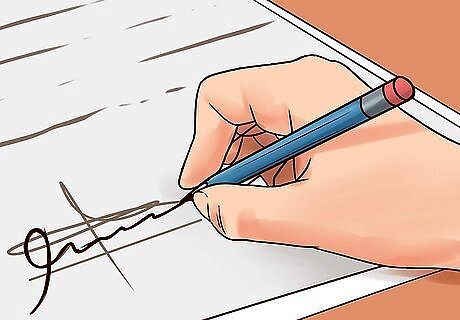
Use a pencil to lightly trace the signature. Use a steady hand and slowly trace over the lines, loops and dots in the signature. Try not to shake your hand or pick up the pencil as you trace. In order to produce a convincing signature, pay attention to the following: The thickness of the lines. People naturally apply more pressure to certain parts of their signature. Maybe the right side of the person's "l" loop is thicker than the left side, for example. The slant of the signature. As you trace, pay attention to the natural slant of the signature and be sure to follow it. The order of the letter formation. For instance, does it look like the person crossed his Ts dotted his Is after completing the rest of the signature? This can affect the way the final signature looks. It's a subtle matter, but it can mean the difference between a decent forgery and one that's easy to call out as fake.
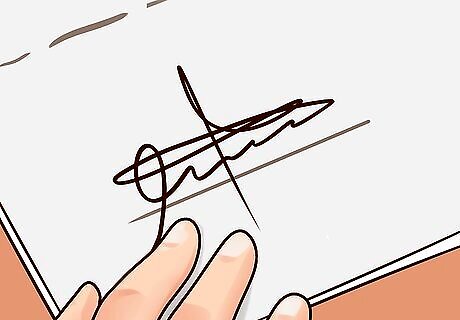
Place the tracing paper over the blank spot where you want to copy the signature. Be sure it's aligned correctly so that it will look like it was signed in a natural way. Many people don't sign their signatures neatly and in a straight line, so take this into account when you're positioning the signature.
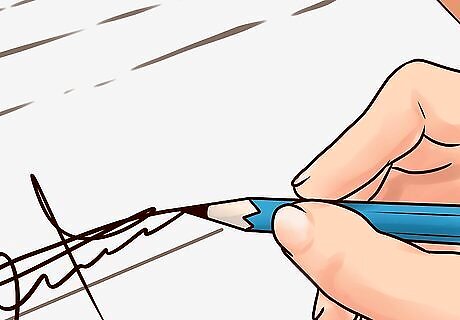
Make a signature impression. Use a pencil or another pointed instrument to press fairly hard over the traced signature to make an impression of the signature on the desired forging area. Don't press so hard that you tear the paper or change the way the signature will look. A deep impression will be noticeable as a sign of forgery, so try to make it as faint as possible while still leaving enough of an indent that you'll be able to go over it in pen.
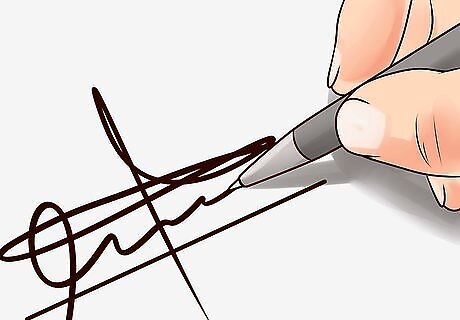
Remove the tracing paper and write the signature in pen. Carefully go over the indented signature with a pen. Don't lift your hand or make any shaky movements - try to make it look natural.
Freehanding

Study the original. Look closely at the signature and pay attention to how it was formed. Everyone writes their signature a little differently, and chances are if you try to reproduce it without studying it first, you'll make some obvious mistakes. Pay attention to these factors as you take in the contours of the signature: Look at places where the letters connect. Is there a lot of overlap between letters, or are there spaces between the letters? Check out the formation of the letters. Are they legible? Misshapen? Scrunched together? Do they have dramatic flourishes? Look at the height and size of the loops. Are they big and billowy? Small and sharp? Getting the loops right is central to a good forgery. Examine the slant. Does the signature slant to the right or to the left? How much does it slant? How much space does the signature take up on the line?

Try turning it upside down. It can help to look at the signature from another angle. Look at it as a drawing instead of a signature. This will help you approach it more objectively and enable you to recreate it for what it is, rather than getting your personal signature-writing habits involved.

Trace the signature several times. This will help you get a feel for the lines and curves of the other person's handwriting. Take care to try to mimic the motions of the person who originally signed his or her name.
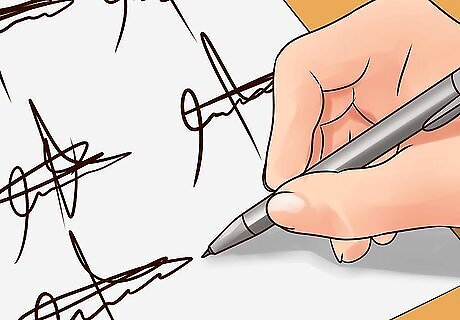
Practice freehanding. Now that you understand the signature, start writing it freely. You're going to need to practice a lot before it looks anything like the original. The difficulty of getting it right might surprise you! Signatures are tough to forge, which is one reason why they're still used as a way to verify a variety of legal documents. As you practice, note minor differences between the original signature and your practice signatures. Make adjustments as necessary. Keep practicing until the act of writing the signature feels natural, and you can sign the name without pausing.
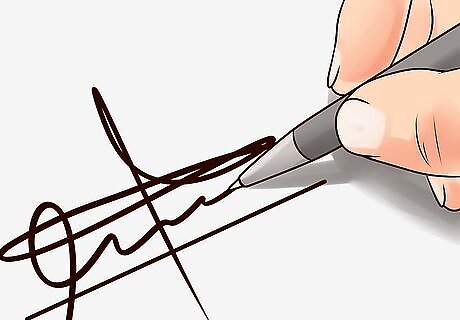
Write it with confidence. When it's time to put pen to paper, you should be confident enough to sign the name without lifting the pen or spending too long writing it. A signature signed with confidence will look more authentic than one where it's obvious that a lot of time and care was taken to write it. Sign the name quickly and resist the urge to make changes - there's no going back now.
Avoiding Pitfalls
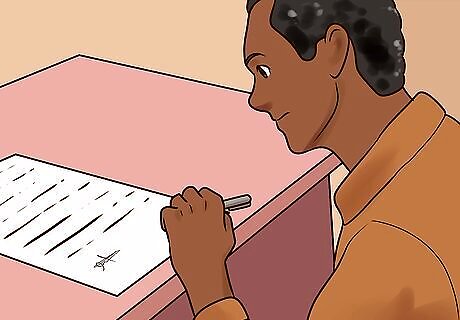
Pay attention to what you're writing. Many first-time forgers pay too much attention to the original signature and forget to pay attention to what they're writing. If you're looking at the signature instead of your own pen and paper, your forgery is going to come out shaky and strange-looking. That's a dead giveaway that you've just signed someone else's signature. If you don't have a lot of time to practice a signature before signing on the dotted line, your best bet is to first study the signature, taking note of all the important elements, and then sign it as naturally as possible while actually looking at what you're doing.

Don't retouch. Another big clue that a signature has been forged is when it's apparent that the signature was retouched. Think about it - do you go back and adjust your letters after signing your own name? No, you're probably fine with a slightly sloppily crossed "t" or a half-formed "b." It's abnormal to see spots where these natural errors have been painstakingly corrected.
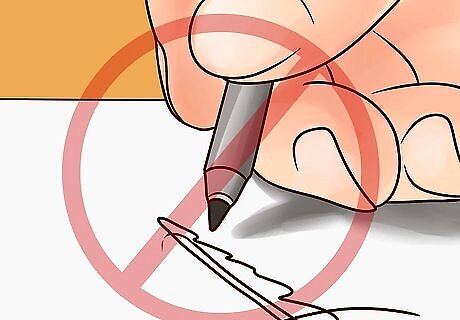
Don't lift the pen. Again, think about how you sign your own name. You do it in one smooth motion, keeping your pen to the paper the whole time. A signature with little gaps indicating the person signing paused, picked up the pen, then started again is a big sign that it was forged. When you're forging a signature, avoid this big mistake and sign it as naturally as possible.
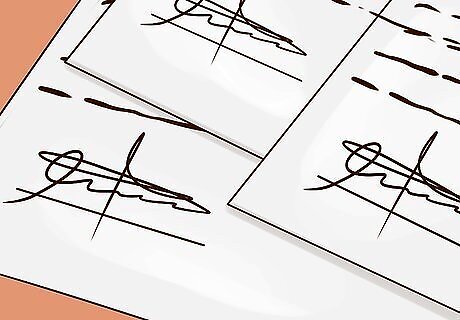
Make each signature a little different. People don't sign their names the exact same way every time. It's easy to spot forgeries when you see a series of signatures on many different documents that all look exactly the same. This is a problem you can run into if you're using tracing paper to forge signatures. Be sure to do something a little different every time to make the signatures look authentic.
















Comments
0 comment